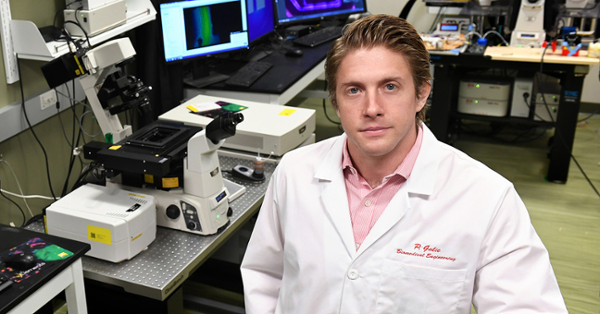Rowan University researchers develop injectable biomaterial to aid spinal cord repair
Rowan University researchers develop injectable biomaterial to aid spinal cord repair

A team of researchers at Rowan University has developed a groundbreaking injectable biomaterial that could significantly improve recovery outcomes following spinal cord injuries. The study, recently published in the journal Biomaterials, introduces a multifunctional hydrogel system designed to address the complex biological environment that hinders regeneration in the central nervous system.
Led by Louis S. Paone and Peter A. Galie, Ph.D., in the Henry M. Rowan College of Engineering’s Department of Biomedical Engineering, the research presents a novel approach to spinal cord repair by combining multiple therapeutic agents into a single, injectable platform. The innovation centers on hyaluronic acid (HA), a naturally occurring molecule in the body, which the team engineered to act as a nanocarrier for bioactive compounds. The material was then embedded in a temperature-sensitive gel that solidifies upon injection, allowing for minimally invasive delivery directly to the injury site.
The researchers modified it to carry two key ingredients: one that blocks a protein responsible for scar formation and another that helps guide nerve cells to grow in the right direction. These ingredients are delivered together in a gel that responds to body temperature, making it easy to inject and less invasive.
By targeting both scarring and the process that prevents damaged nerve fibers from regrowing, the system aims to create a more favorable environment for nerve regeneration.
In lab tests and animal studies, the gel showed promising results. It not only released its healing agents at a steady rate, but also helped nerve fibers and support cells move into the injured area. The treatment led to signs of improved nerve connections after just a few weeks.
Standard approaches now in clinical use can deliver only a single medication to the injury site. Galie, who also oversaw the project’s conceptual development and data analysis, said the results were exciting because the new material is a modular platform that allows researchers to bind any type of therapeutic agent, whether it’s a small molecule drug, monoclonal antibody or peptide.
“You could add to or decorate this material in whichever way you want with whatever molecular toolbox you have,” Galie said. “We wanted to create a mechanism to deliver multiple therapeutics into the site of the injury to address the complex environment that prevents recovery.”
Their proof-of-concept study was conducted in collaboration with scientists from Drexel University College of Medicine, including Drs. Itzhak Fischer and Ying Jin, and Julien Bouyer, who contributed expertise in neuroscience and helped test the gel in animal models.
This study was partially supported by the National Science Foundation and represents a significant step forward in the development of combination therapies for central nervous system injuries. While more research is needed before this treatment can be tested in humans, the results are an exciting step forward. The team hopes that the approach of delivering multiple healing agents in one simple injection eventually leads to better recovery options for people with spinal cord injuries.